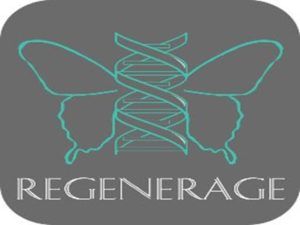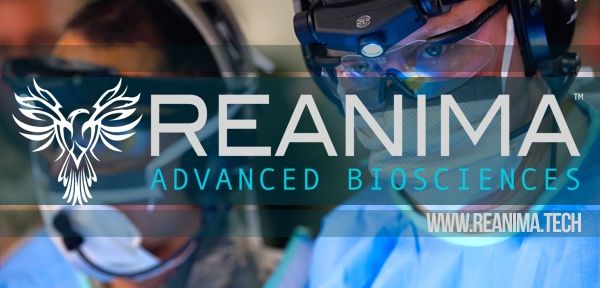Bioquark Inc. (www.bioquark.com) Interview in MoneyWeek
Read whole story: http://moneyweek.com/who-wants-to-live-forever/

Bioquark Inc. (www.bioquark.com) Interview in MoneyWeek
Read whole story: http://moneyweek.com/who-wants-to-live-forever/

Bioquark, Inc., (http://www.bioquark.com) a life sciences company focused on the development of novel, natural bio-products for health, wellness and rejuvenation, has entered a collaboration whereby Forest Organics LLC & I-Beauty Charm LLC, a unique, integrated facial and body cosmetology facility, and their state-licensed, highly skilled skin care specialists, will be utilizing novel, natural Bioquantine™ extract complexes as part of their spa procedures, as well as providing consumer access to a range of proprietary skin care products (http://www.forestorganics.life).
“We are very excited about this first company collaboration in the area of beauty care and cosmetology,” said Ira S. Pastor, CEO, Bioquark Inc. “It is another step forward towards the wide applicability of our natural combinatorial bio-products, across a broad range of health and wellness segments, as well as future franchise opportunities.”
The integrated Forest Organics LLC & I-Beauty Charm LLC model was conceived by local Tampa business women, Nadia Goetzinger and Tatyana Reshetnikova, to offer a new generation of products and services related to skin beautification and rejuvenation.
“We look forward to working closely with Bioquark Inc. on this initiative and providing an exclusive range of services and products to customers throughout the greater Tampa metropolitan area,” said Ms. Goetzinger”

About Bioquark, Inc.
Bioquark Inc. is focused on the development of natural biologic based products, services, and technologies, with the goal of curing a wide range of diseases, as well as effecting complex regeneration. Bioquark is developing both biopharmaceutical candidates, as well as non-Rx products for the global consumer health and wellness market segments.
About Forest Organics LLC & I-Beauty Charm LLC
Forest Organics LLC & I-Beauty Charm LLC operate a unique, integrated facial and body cosmetology facility providing novel rejuvenative spa and cosmetology services and products.

Philadelphia, PA, USA / Mexico City, Mexico — Bioquark, Inc., (www.bioquark.com) a life sciences company focused on the development of novel bioproducts for complex regeneration, disease reversion, and aging, and RegenerAge SAPI de CV, (www.regenerage.clinic/en/) a clinical company focused on translational therapeutic applications of a range of regenerative and rejuvenation healthcare interventions, have announced a collaboration to focus on novel combinatorial approaches in human disease and wellness. SGR-Especializada (http://www.sgr-especializada.com/), regulatory experts in the Latin American healthcare market, assisted in the relationship.
“We are very excited about this collaboration with RegenerAge SAPI de CV,” said Ira S. Pastor, CEO, Bioquark Inc. “The natural synergy of our cellular and biologic to applications of regenerative and rejuvenative medicine will make for novel and transformational opportunities in a range of degenerative disorders.”
As we close in on $7 trillion in total annual health care expenditures around the globe ($1 trillion spent on pharmaceutical products; $200 billion on new R&D), we are simultaneously witnessing a paradoxical rise in the prevalence of all chronic degenerative diseases responsible for human suffering and death.
With the emergence of such trends including: personalization of medicine on an “n-of-1” basis, adaptive clinical design, globalization of health care training, compassionate use legislative initiatives for experimental therapies, wider acceptance of complementary medical technologies, and the growth of international medical travel, patients and clinicians are more than ever before, exploring the ability to access the therapies of tomorrow, today.
The estimate of the current market size for procedural medical travel, defined by medical travelers who travel across international borders for the purpose of receiving medical care, is in the range of US $40–55 billion.
Additionally, major clinical trial gaps currently exist across all therapeutic segments that are responsible for human suffering and death. Cancer is one prime example. As a leading cause of morbidity and mortality worldwide for many decades, today there are approximately 14 million new cases diagnosed each year, with over 8 million cancer related deaths annually. It is estimated that less than 5% of these patients, take the initiative to participate in any available clinical studies.
“We look forward to working closely with Bioquark Inc. on this exciting initiative,” said Dr. Joel Osorio, Chief of Clinical Development RegenerAge SAPI de CV. “The ability to merge cellular and biologic approaches represents the next step in achieving comprehensive regeneration and disease reversion events in a range of chronic diseases responsible for human suffering and death.”
About Bioquark, Inc.
Bioquark Inc. is focused on the development of natural biologic based products, services, and technologies, with the goal of curing a wide range of diseases, as well as effecting complex regeneration. Bioquark is developing both biological pharmaceutical candidates, as well as products for the global consumer health and wellness market segments.
About RegenerAge SAPI de CV
RegenerAge SAPI de CV is a novel clinical company focused on translational therapeutic applications, as well as expedited, experimental access for “no option” patients, to a novel range of regenerative and reparative biomedical products and services, with the goal of reducing human degeneration, suffering, and death.

Bioquark, Inc., (http://www.bioquark.com) a company focused on the development of novel biologics for complex regeneration and disease reversion, and Revita Life Sciences, (http://revitalife.co.in) a biotechnology company focused on translational therapeutic applications of autologous stem cells, have announced that they have received IRB approval for a study focusing on a novel combinatorial approach to clinical intervention in the state of brain death in humans.
This first trial, within the portfolio of Bioquark’s Reanima Project (http://www.reanima.tech) is entitled “Non-randomized, Open-labeled, Interventional, Single Group, Proof of Concept Study With Multi-modality Approach in Cases of Brain Death Due to Traumatic Brain Injury Having Diffuse Axonal Injury” (https://clinicaltrials.gov/ct2/show/NCT02742857?term=bioquark&rank=1), will enroll an initial 20 subjects, and be conducted at Anupam Hospital in Rudrapur, Uttarakhand India.
“We are very excited about the approval of our protocol,” said Ira S. Pastor, CEO, Bioquark Inc. “With the convergence of the disciplines of regenerative biology, cognitive neuroscience, and clinical resuscitation, we are poised to delve into an area of scientific understanding previously inaccessible with existing technologies.”
Death is defined as the termination of all biological functions that sustain a living organism. Brain death, the complete and irreversible loss of brain function (including involuntary activity necessary to sustain life) as defined in the 1968 report of the Ad Hoc Committee of the Harvard Medical School, is the legal definition of human death in most countries around the world. Either directly through trauma, or indirectly through secondary disease indications, brain death is the final pathological state that over 60 million people globally transfer through each year.
While human beings lack substantial regenerative capabilities in the CNS, many non-human species, such as amphibians, planarians, and certain fish, can repair, regenerate and remodel substantial portions of their brain and brain stem even after critical life-threatening trauma.
Additionally, recent studies on complex brain regeneration in these organisms, have highlighted unique findings in relation to the storage of memories following destruction of the entire brain, which may have wide ranging implications for our understanding of consciousness and the stability of memory persistence.
“Through our study, we will gain unique insights into the state of human brain death, which will have important connections to future therapeutic development for other severe disorders of consciousness, such as coma, and the vegetative and minimally conscious states, as well as a range of degenerative CNS conditions, including Alzheimer’s and Parkinson’s disease,” said Dr. Sergei Paylian, Founder, President, and Chief Science Officer of Bioquark Inc.
Over the years, clinical science has focused heavily on preventing such life and death transitions and made some initial progress with suspended animation technologies, such as therapeutic hypothermia. However, once humans transition through the brain death window, currently defined by the medical establishment as “irreversible”, they are technically no longer alive, despite the fact that human bodies can still circulate blood, digest food, excrete waste, balance hormones, grow, sexually mature, heal wounds, spike a fever, and gestate and deliver a baby. It is even acknowledged by thought leaders that recently brain dead humans still may have residual blood flow and electrical nests of activity in their brains, just not enough to allow for an integrated functioning of the organism as a whole.
“We look forward to working closely with Bioquark Inc. on this cutting edge clinical initiative,” said Dr. Himanshu Bansal, Managing Director of Revita Life Sciences.
About Bioquark, Inc.
Bioquark Inc. is focused on the development of natural biologic based products, services, and technologies, with the goal of curing a wide range of diseases, as well as effecting complex regeneration. Bioquark is developing both biological pharmaceutical candidates, as well as products for the global consumer health and wellness market segments.
About Revita Life Sciences
Revita Life Sciences is a biotechnology company focused on the development of stem cell therapies that target areas of significant unmet medical need. Revita is led by Dr. Himanshu Bansal MD, PhD. who has spent over two decades developing novel MRI based classifications of spinal cord injuries as well as comprehensive treatment protocols with autologous tissues including bone marrow stem cells, dural nerve grafts, nasal olfactory tissues, and omental transposition.
OK. In scientific terms, it is only a ‘hypothesis’ — the reverse of the ‘Disposable Soma’ theory of ageing. Here how it goes.
For the past several decades, the Disposable Soma theory of ageing has been enjoying good publicity and a lively interest from both academics and the public alike. It stands up to scientific scrutiny, makes conceptual sense and fits well within an evolutionary framework of ageing. The theory basically suggests that, due to energy resource constraints, there is a trade-off between somatic cell and germ cell repair. As a result, germ cells are being repaired effectively and so the survival of the species is assured, at a cost of individual somatic (bodily) ageing and death. To put it very simply, we are disposable, we age and die because all the effective repair mechanisms have been diverted to our germ cell DNA in order to guarantee the survival of our species.
The theory accounts for many repair pathways and mechanisms converging upon the germ cell, and also for many of those mechanisms being driven away from somatic cell repair just to ensure germ cell survival. In the past two or three years however, it is increasingly being realised that this process is not unidirectional (from soma to germ), but it is bi-directional: under certain circumstances, somatic cells may initiate damage that affects germ cells, and also that germ cells may initiate repairs that benefit somatic cells!
I can’t even begin to describe how important this bi-directionality is. Taking this in a wider and more speculative sense, it is, in fact, the basis for the cure of ageing. The discovery that germ cells can (or are forced to) relinquish their repair priorities, and that resources can then be re-allocated for somatic repairs instead, means that we may be able to avoid age-related damage (because this would be repaired with greater fidelity) and, at the same time, avoid overpopulation (as our now damaged genetic material would be unsuitable for reproduction).
Ermolaeva et al. raised the further possibility that DNA damage in germ cells may protect somatic cells. They suggested that DNA injury in germ cells upregulates stress resistance pathways in somatic cells, and improves stress response to heat or oxidation. This is profoundly important because it shows that, in principle, when germ cells are damaged, they produce agents which can then protect somatic cells against systemic stress.
This mechanism may reflect an innate tendency to reverse the trade-offs between germ cell and somatic cell repair: when the germ cells are compromised, there is delay in offspring production matched by an increased repair of somatic cells. In Nature’s ‘eyes’, if the species cannot survive, at least the individual bodies should.
In addition, it was shown that neuronal stress induces apoptosis (orderly cell death) in the germ line. This process is mediated by the IRE-1 factor, an endoplasmic reticulum stress response sensor, which then activates p53 and initiates the apoptotic cascade in the germ line. Therefore germ cells may die due to a stress response originating from the distantly-located neurons.
If this mechanism exists, it is likely that other similar mechanisms must also exist, waiting to described. The consequence could be that neuronal positive stress (i.e. exposure to meaningful information that entices us to act) can affect our longevity by downgrading the importance of germ cell repair in favour of somatic tissue repair. In other words, the disposable soma theory can be seen in reverse: the soma (body) is not necessarily disposable but it can survive longer if it becomes indispensable, if it is ‘useful to the whole. This, as we claimed last week, can happen through mechanisms which are independent of any artificial biotechnological interventions.
We know that certain events which downgrade reproduction, may also cause a lifespan extension. Ablation of germ cells in the C.elegans worm, leads to an increased lifespan, which shows that signals from the germline have a direct impact upon somatic cell survival, and this may be due to an increased resistance of somatic cells to stress. Somatic intracellular clearance systems are also up-regulated following signals from the germ line.
In addition, protein homoeostasis in somatic cells is well-maintained when germ cells are damaged, and it is significantly downgraded when germ cell function increases. All of the above suggest that when the germ cells are healthy, somatic repair decreases, and when they are not, somatic repair improves as a counter-effect.
In an intriguing paper published last month, Lin et al. showed that under certain circumstances, somatic cells may adopt germ-like characteristics, which may suggest that these somatic cells can also be subjected to germ line protection mechanisms after their transformation. A few days ago Bazley et al. published a paper elucidating the mechanisms of how germ cells may induce somatic cell reprogramming and somatic stem cell pluripotency. This is an additional piece of evidence of the cross-talk mechanisms between soma and germ line, underscoring the fact that the health of somatic tissues depends upon signals from the germ line.
In all, there is sufficient initial evidence to suggest that my line of thinking is quite possibly correct: that the disposable soma theory is not unidirectional and the body may not, after all, be always ‘disposable’. Under certain evolutionary pressures we could experience increased somatic maintenance at the expense of germ cell repairs, and thus reach a situation where the body actually lives longer. I have already discussed that some of these evolutionary pressures could be dependent upon how well one makes themselves ‘indispensable’ to the adaptability of the homo sapiens species within a global techno-cultural environment.